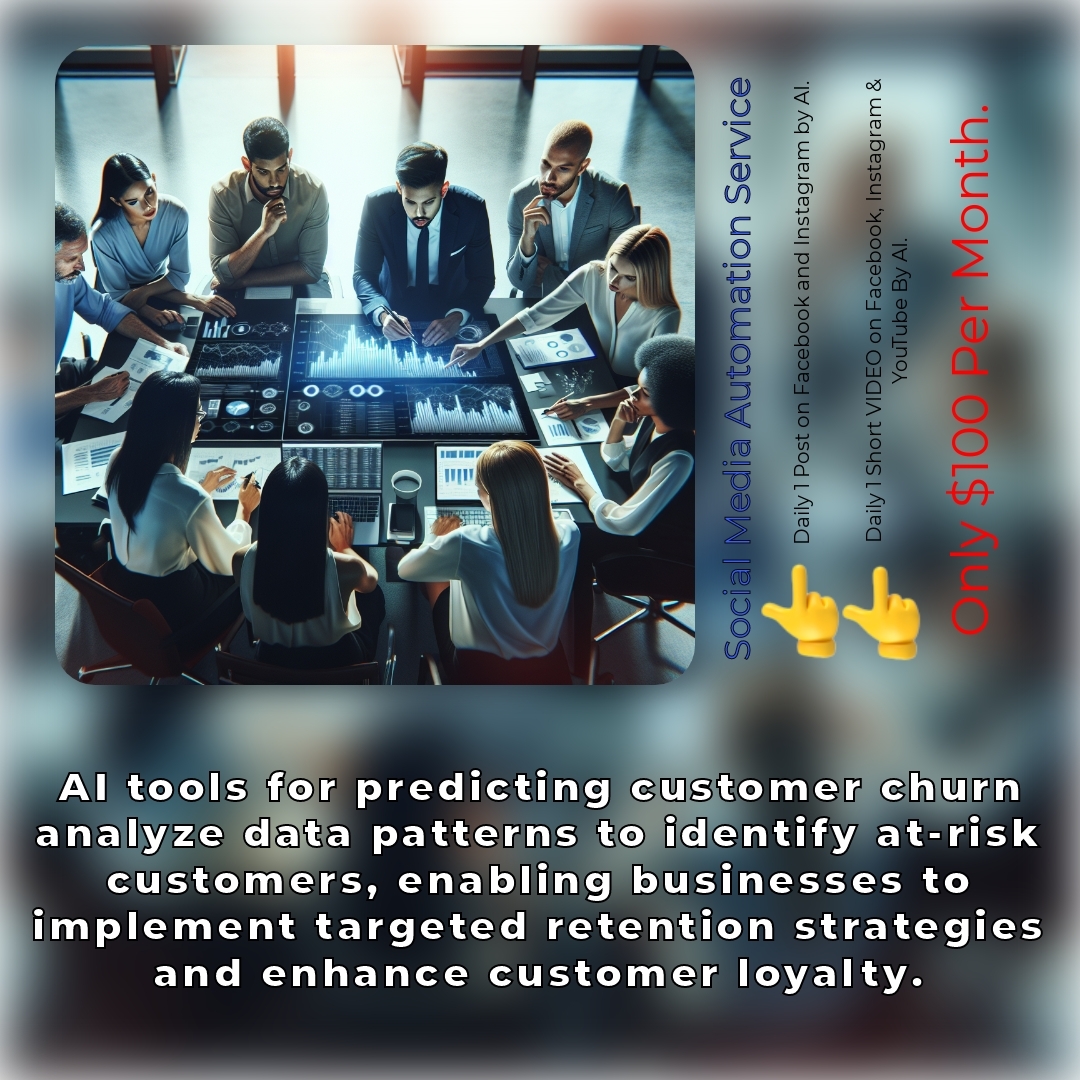Customer churn rates are alarmingly high across many industries, posing a significant challenge for businesses striving to retain clients. Customer churn prediction involves analyzing patterns to foresee account cancellations, making it essential for sustainable growth. Using AI tools, companies can enhance their retention efforts by accurately identifying customers likely to leave and implementing effective strategies to keep them engaged.
“Predict churn wisely, nurture loyalty, and transform customer relationships.”

Understanding Customer Churn
Customer churn, simply put, refers to the rate at which customers stop doing business with a company. For businesses, monitoring churn rates is critical. When customers leave, it can significantly impact revenue and brand reputation. This makes understanding why churn happens essential for sustainable business practices.
So why do customers churn? There are several common reasons:
- Poor customer service experiences
- Increased competition offering better deals
- Lack of engagement or personalization
- Changes in customer needs or preferences
Analyzing these factors through **customer churn analysis** helps businesses pinpoint areas for improvement and develop strategies to enhance customer satisfaction, ultimately reducing attrition rates.
The Role of AI in Customer Churn Prediction
Now, let’s talk about AI tools for customer retention. These advanced technologies can analyze vast amounts of data quickly and effectively. With tools like predictive analytics, businesses can identify patterns that indicate potential churn. This allows them to act before customers make the decision to leave.
AI is vital in churn prediction for several reasons. Firstly, it enhances the ability to analyze large datasets for actionable insights. By understanding customer behavior and preferences, companies can tailor their communication and offers to meet customer needs better. This informed decision-making is crucial in reducing customer attrition.
Techniques and Best Practices for Predicting Customer Attrition with AI
When it comes to machine learning customer churn techniques, several algorithms stand out. For example, logistic regression and decision trees are commonly used to predict which customers are likely to churn. A real-world example is a telecommunications company that implemented a churn prediction model, which led to a significant reduction in their churn rate by retaining customers who were identified as at risk.
So, what are the best AI tools available for predicting customer churn? Here are a few notable options:
- Tableau: Great for data visualization and interpretation.
- IBM Watson: Offers robust machine learning capabilities tailored for customer insights.
- Google Cloud AI: Provides powerful tools for processing and analyzing data.
- HubSpot: Known for its marketing automation features, which also include churn prediction.
Each tool comes with distinct features and benefits, making it essential to choose one that aligns with the specific needs of your business.
Customer Segmentation for Churn Prediction
Understanding customer segmentation plays a crucial role in enhancing predictive analysis. By dividing customers into distinct groups based on shared characteristics—such as buying behavior or demographics—businesses can tailor their strategies to meet specific needs.
Utilizing segmentation alongside AI tools can lead to better predictions. For instance, if a company identifies a particular segment that shows high attrition rates, they can implement targeted marketing campaigns aimed specifically at retaining those customers.
Reducing Customer Attrition: Strategies Using AI
How can AI be used to boost customer retention? Here are a few practical strategies:
- Personalized Recommendations: Utilize data to suggest products that meet individual customer preferences.
- Proactive Engagement: Reach out to at-risk customers with offers or feedback requests.
- Feedback Loops: Regularly gather customer feedback to improve products and services.
Case studies demonstrate that businesses leveraging AI for retention see remarkable success. A popular subscription service used predictive analytics to identify churn signals, allowing them to implement individual strategies that resulted in up to a 30% decrease in churn rates.
Churn Rate Prediction: Metrics and KPIs
To effectively monitor customer churn, it’s essential to track key metrics. Here are some important ones:
- Churn Rate: The percentage of customers who leave within a specific time frame.
- Customer Lifetime Value (CLV): The predicted revenue generated from a customer over their lifetime.
- Net Promoter Score (NPS): A measure of customer satisfaction and loyalty.
AI tools can assist in continuous monitoring of these metrics, helping businesses stay ahead of potential churn challenges.
Conclusion
In summary, customer churn prediction is not just an analytical exercise; it’s a critical business strategy. By leveraging AI tools and predictive analytics, companies can gain valuable insights into customer behavior, which helps in crafting effective retention strategies. The investment in understanding and mitigating churn through AI can pay off significantly over time.
If you’re looking to enhance your customer retention efforts, now’s the time to explore the best AI tools for predicting customer churn. Don’t wait until it’s too late!
Additional Resources
For further reading on customer churn prediction and AI tools, consider exploring the following resources:
- Research papers on predictive analytics for customer churn.
- Case studies of businesses successfully reducing churn rates.
- Online courses focused on machine learning customer churn techniques.
Frequently Asked Questions about Customer Churn
What is customer churn?
Customer churn refers to the rate at which customers stop doing business with a company. It’s an essential metric for businesses to monitor since it impacts revenue and brand reputation.
What are common reasons for customer churn?
- Poor customer service experiences
- Increased competition offering better deals
- Lack of engagement or personalization
- Changes in customer needs or preferences
How can businesses analyze customer churn?
Conducting customer churn analysis allows businesses to identify factors leading to churn and develop strategies to improve customer satisfaction.
What role does AI play in predicting customer churn?
AI can analyze vast datasets to identify patterns that indicate potential churn, enabling businesses to take proactive measures to retain customers.
What are some effective techniques for predicting customer attrition with AI?
Common techniques include algorithms like logistic regression and decision trees, which can help identify customers likely to churn.
What AI tools are available for predicting customer churn?
- Tableau: Known for data visualization
- IBM Watson: Offers machine learning capabilities
- Google Cloud AI: Provides powerful data analysis tools
- HubSpot: Features marketing automation and churn prediction
How does customer segmentation enhance churn prediction?
By dividing customers into groups based on characteristics, businesses can tailor strategies to meet specific needs, leading to more effective retention efforts.
What strategies can businesses implement using AI to reduce churn?
- Personalized Recommendations: Suggesting products based on customer preferences
- Proactive Engagement: Reaching out to at-risk customers with offers
- Feedback Loops: Regularly collecting customer feedback to improve services
Which metrics should businesses track to monitor churn?
- Churn Rate: Percentage of customers who leave over a specific time
- Customer Lifetime Value (CLV): Predicted revenue from a customer over their lifetime
- Net Promoter Score (NPS): A measure of customer satisfaction
How can businesses utilize AI in monitoring churn metrics?
AI tools can help continuously monitor key metrics, enabling businesses to stay ahead of potential churn challenges.
Where can I find more information about customer churn prediction?
- Research papers on predictive analytics for customer churn
- Case studies of businesses successfully reducing churn rates
- Online courses focused on machine learning customer churn techniques








